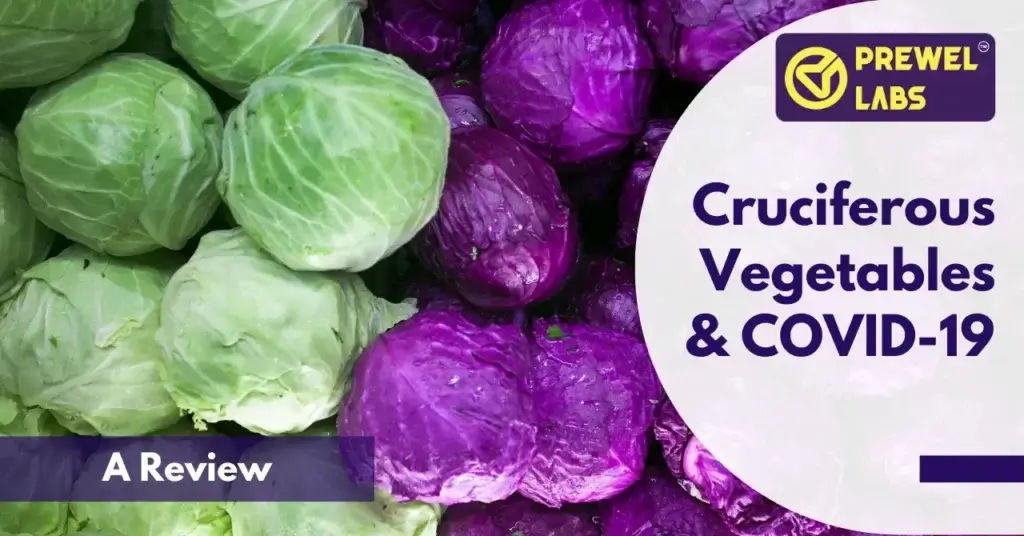Cruciferous vegetables are commonly available and a staple food in India. These vegetables belong to the family Brassicaceae and are naturally rich in goitrogens (National Resource Conservation Service, 2003). Some of the commonly used Brassicaceae vegetables are radish, kale, turnip, knol-khol, broccoli, cabbage, cauliflower, green mustard, rapeseeds, spinach and turnip. These vegetables contain anti-thyroid substances/goitrogens and constitute a portion of our regular diet (Van Etten et al. 1969; Gaitan E 1990; de Groot AP et al. 1991).
What are Goitrogens in Cruciferous Vegetables?
Goitrogens are substances that interfere with the normal functioning of the thyroid gland, and they are broadly classified into three types, namely goitrins, thiocyanates and flavonoids. These goitrogenic substances are also collectively called glucosinolates. Glucosinolates are secondary metabolites formed in plants, which have adverse effects on thyroid hormone secretion.
In 2005, Amar K Chandra et al. conducted a study in which they fed cooked and uncooked radish to Albino rats and then found an increased amount of Isothiocyanates (ITC) in both cooked and uncooked radish fed rats. The amount of ITC was estimated in urine samples of rats using HPLC (High-performance liquid chromatography). The researchers also found that the glucosinolates content in urine samples of rats fed uncooked radish was higher in comparison to rats which were fed cooked radish.
Interestingly, rats fed uncooked radish also had increased weight of the thyroid gland than rats fed with cooked radish. Thyroid follicles in these radish-fed rats were also lined with high cuboidal cells with distinct nucleus showing hypertrophy and hyperplasia filled with less homogeneous colloid, and some of the follicles were invaded by epithelial cells. Highest TPO (thyroid peroxidase) activity was noted in the KI-supplemented group of rats. Inhibition in TPO activity was more profound in the fresh radish-fed groups.
Studies have also found that isothiocyanates such as allyl isothiocyanates, iberin and indole-3-carboxyaldehyde are present in cruciferous vegetables. It was also found that white cabbage extracts are more effective in scavenging the DPPH significantly (p≤ 0.05) in a dose-dependent manner. And, IC50 values of white cabbage extracts was estimated to be 85.66mg (S Anandan et al. 2018, 3(3): 000152).
A European ecological study by Jean Bousquet et al. (2020) also found that fermented vegetables or cabbage may be associated with low death rates of COVID-19 in European countries. It was observed that SARS-CoV-2 binds to its receptor―the angiotensin-converting enzyme 2 (ACE2) and this binding enhances the activity of angiotensin II receptor type-1 (AT1R) and leads to oxidative stress. The oxidative stress, in turn, leads to insulin resistance as well as lung and endothelial damage, all of which are severe outcomes of COVID-19. The putative mechanism by which fermented vegetables and cabbage effect COVID-19 severity is said to be associated with Nrf2.
The nuclear factor, erythroid derived-2 (Nrf2), activated by fermented vegetables or cabbage, is the most potent antioxidant in human beings that can block the AT1R axis. The downregulation of ACE 2 also reduces the Ang-1,7 antioxidant activity that was found to activate Nrf2, which protects against hallmarks of severe COVID-19. A review of the studies stated above shows that higher consumption of cruciferous vegetables may have adverse effects on reducing thyroid problems, but studies have also shown that these vegetables could be involved in effective reduction of COVID-19 severity.
More Studies by Indian Dietetic Association
The Indian Dietetic Association (IDA), American Dietetic Association (ADA) and the British Dietetic Association (BDA) are conducting more studies to understand the association between COVID-19 severity and consumption of cruciferous vegetables. Even though studies have put forward the hypothesis that cruciferous vegetables can reduce the effects of COVID-19, there is no proof of the direct effect of these vegetables on COVID-19. As of now, the question of “Can Cruciferous Vegetables Control COVID-19 effectively?” remains unanswered.
References:
- National Resource Conservation Services 2003 plant database, department of agriculture, Washington DC. Available at http://plants.usda.gov/index.html.
- Van Etten C. H., Daxenbichler, M. E., Williams, P. H., & Kwolek, W. F. (1976). Glucosinolates and derived products in cruciferous vegetables. Analysis of the edible part from twenty-two varieties of cabbage. Journal of Agricultural and Food Chemistry, 24(3), 452-455.
- Gaitan E. (1990). Goitrogens in food and water. Annual review of nutrition, 10(1), 21-37.
- De Groot, A. P., Willems, M. I., & De Vos, R. H. (1991). Effects of high levels of Brussels sprouts in the diet of rats. Food and chemical toxicology, 29(12), 829-837.
- Chandra Amar K, Mukhopadhyay, S., Ghosh, D., & Tripathy, S. (2006). Effect of radish (Raphanussativus Linn.) on thyroid status under conditions of varying iodine intake in rats.
- Anandan S, Syeda FS, Mahadeva M Jand Urooj A, Glucosinolates and Antioxidant Properties of Brassica oleracea Var. capitata L., Food Sci Nutr Technol, 2018, 3(3): 000152.
- Jean Bousquet, Josep M. Anto, Wienczyslawa Czarlewski, Tari Haahtela, Susana C. Fonseca, Guido laccarino, Hubert Blain, Alain Vidal, Aziz Sheikh, Cezmi A. Akdis, Torsten Zuberbier, ARIA group (2020), Cabbage and fermented vegetables: From death rate heterogeneity in countries to candidates for mitigation strategies of severe COVID-19- A review, DOI: 10.1111/all.14549.

